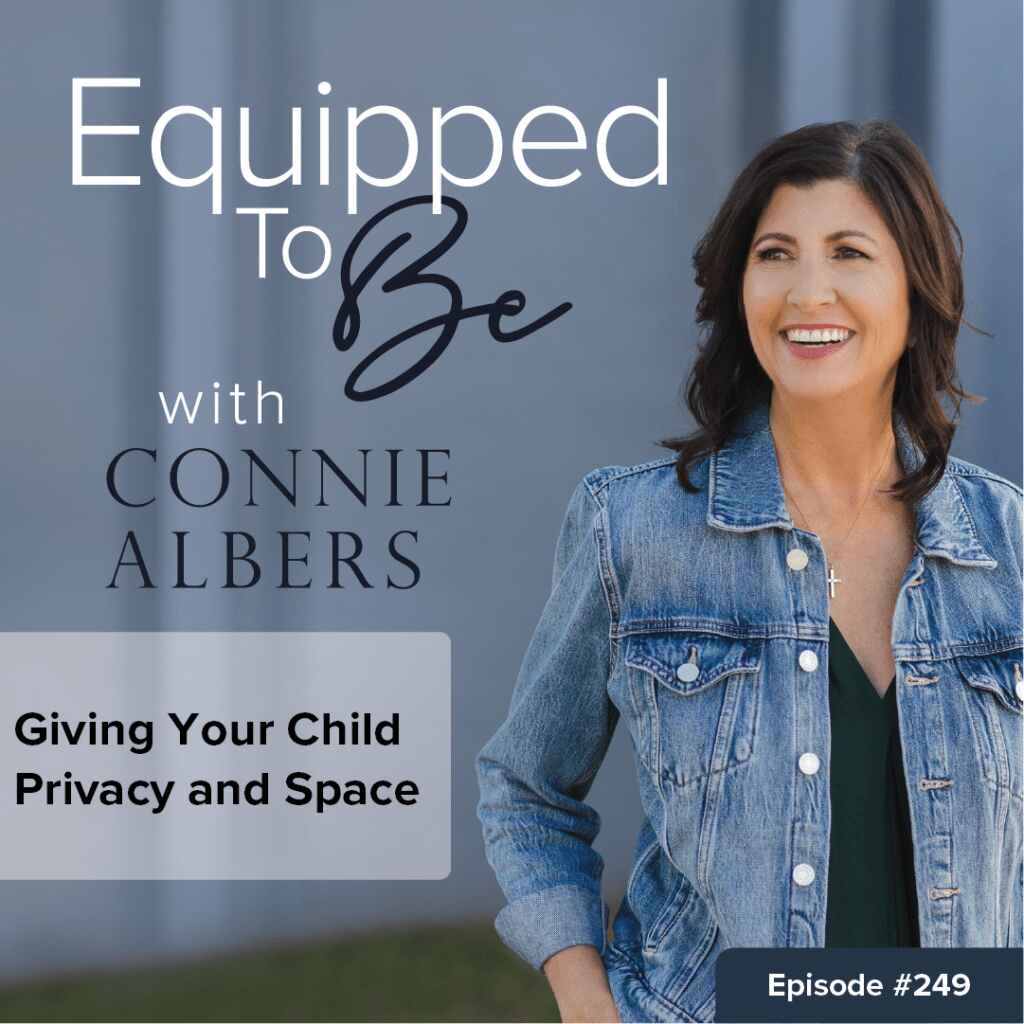Giving your child privacy and space as children grow is a natural part of their development. It helps them build self-confidence, responsibility, and decision-making skills. While it is a normal part of growing up, most parents get uncomfortable and aren’t sure how to provide safety while staying connected. That’s what we will look at in this blog.
Finding the right balance between hovering and honoring their privacy needs can be tricky. If we give them too much freedom, our precious kids can be put at risk, while hovering can lead to rebellion, secrecy, and strained relationships.

Balancing privacy with safety is about trust, not control. When teens feel respected and heard, they are more likely to share their lives with their parents willingly.
Parents can build a relationship where teens feel safe seeking guidance without fear of invasion by fostering a mutual understanding of privacy. So, how do we walk this season of parenting well?
Privacy isn’t just about personal space or privacy—it’s much more than that. Our children learn valuable skills like time management, problem-solving, and accountability.
You may find that not all of your children desire privacy. They want to be with people all the time. That’s okay. It really comes down to their temperament, personality, and learning style.
Giving teens space allows them to:
- Make independent decisions
- Develop self-confidence
- Think through cause-and-effect situations
- Build emotional resilience
Instead of treating privacy as an “all-or-nothing” issue, parents should adjust boundaries based on maturity, behavior, and trust levels.
How to Balance Privacy and Space
On the other hand, not every struggle means your parenting style is fundamentally flawed. Sometimes, it’s about adjusting things to fit your child’s unique needs or the changing dynamics of your family.
Three ways to practice this:
- Knock on the door before entering. It shows respect.
- Encourage journaling, prayer, or meditation – (Don’t read it) 🙂
- Give them enough time to dream, think about their thoughts, and solve their problems.
You can add to these simple steps to make it work for your family.
Practical Steps to Giving Privacy and Space
Remembering your goal is to help your child grow and mature. These practical steps will act as a springboard to help you navigate this season of honoring your child’s needs.
Mutual Aggrement
Getting your child to agree with the terms you set up is critical to their following your instructions.
Ask yourself:
- Is this a need or a want? Both are okay, but knowing the difference is worth knowing.
- Does it bring peace and trust to our home or create unnecessary tension?
- Sometimes, the hardest part is admitting that something isn’t working and being willing to change.
Sometimes, the hardest part is acknowledging something isn’t working and being willing to change.
Teaching Responsiblity
Talk to your child (in an age-appropriate way) about what is expected. Their perspective can reveal blind spots you hadn’t considered.
Also, seek counsel from trusted mentors, friends, or parenting resources to gain fresh ideas.
- Explain how everything posted online lives online forever and can impact future opportunities.
- Help them learn to adjust privacy settings to keep personal information safe.
- Talk about bullying- online or in-person, and peer pressure.
As your child branches out, there will be times when you have to limit your child’s privacy and freedom.
When Privacy Should Be Limited
While we want to give our child freedom and honor their need for space and privacy, there might come a time when you need to step in to keep them safe.
- Extreme mood changes or withdrawal (possible depression, anxiety, or self-harm)
- Drastic drop in grades or loss of motivation
- Signs of online bullying, inappropriate relationships, or dangerous online behavior
- Secretiveness around substances or risky activities
If you see any changes in your child’s behavior, don’t ignore it. Pray, talk to your spouse or someone you trust, and then approach your child with concern, not accusation.
Be slow to react and quick to listen. Let them know you are there to help, not control.
Final Takeaway
Privacy should be earned through trust and given in appropriate stages based on the teen’s responsibility and maturity level.
Whether you’re parenting a tween needing some space or a teen asking for more privacy, you can use practical, grace-filled tips to guide your child while keeping your relationship strong.
References, Related Shows, and Links
The following may contain affiliate links:
Related Episodes
How to Connect with Connie
- Follow Connie Albers on Instagram | Facebook
- Learn more about Connie’s book Parenting Beyond the Rules.
- Learn more about the Equipped To Be podcast
Subscribe to Equipped To Be
If you find this podcast helpful, please subscribe and leave a review. It’s a great way to support the show and only takes a few seconds.
Have a Question or Want to Book Connie to Speak?
Would you like to have Connie speak at your event? Contact Connie here.


